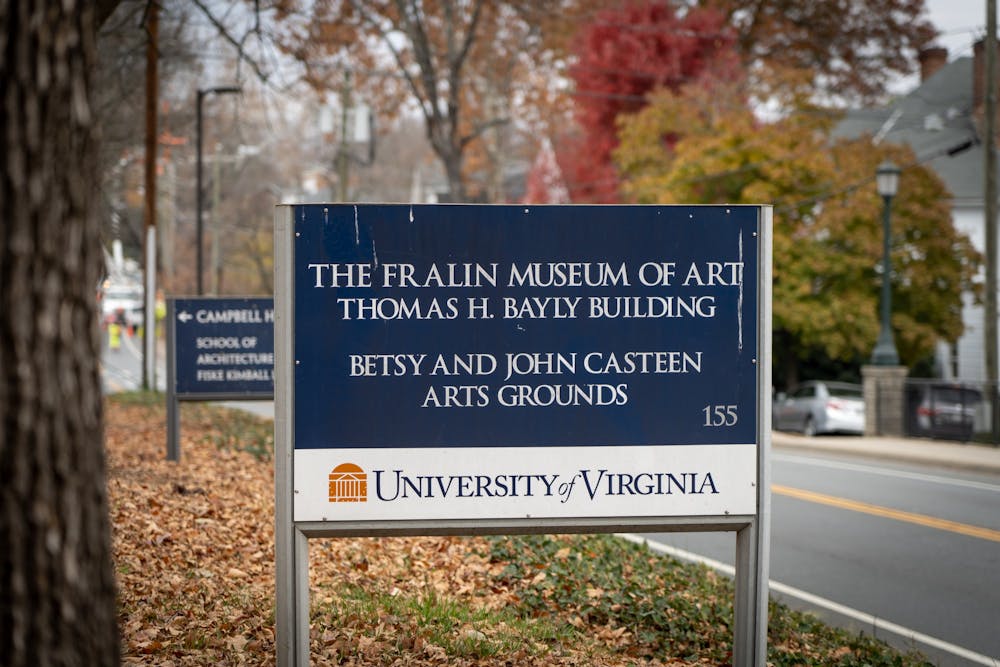While the field of art is often thought of as a progressive one, social critics — and artists themselves — have long complained of minority groups not being shown their due. A monolithic curation strategy is seen as out of touch and exclusive in a time where diversity is recognized as a strength. Museums and galleries are working to change this. At the University, the Fralin Museum of Art hopes to utilize its extensive historical collection and engage with diverse contemporary artists in order to present a broader range of art.
In September, the museum announced a commitment to have at least 50 percent of its collection come from artists belonging to underrepresented backgrounds. The effort represents a long term effort, and recent exhibitions like “Otherwise” — which showcased queer artists and art interpretations — are evidence of the Fralin living up to its commitment. The Fralin hopes to present diversity not only in race and gender, but also in terms of sexual orientation, geographical origins, socioeconomic status and indigenous perspectives.
Museum director Matthew McLendon spoke with Arts & Entertainment to give an update on the progress of the representation effort and its context within both the specific University and broader art communities.
“I think we are this most important bridge between the University and the wider community,” McLendon said. He mentioned partnerships with the Alzheimer’s Association of Central Virginia and the Greenbrier Global Artists program, which connects refugees with local community members.
The Fralin is an art museum, but it serves a far greater purpose than simply displaying objects for appreciation. McLendon specifically called out its status as a social space, saying “Increasingly, museums of any kind — academic museums among them — are important convening spaces.”
McLendon, curators and other staff behind the Fralin see an impetus to promote diversity within those spaces. McLendon mentioned his specific experience working in the museum field for 20 years.
“We’re still talking about many of the same issues,” he said.
The issue of representation bears particular resonance at the University, which is often criticized — like many other prestigious and traditional East Coast schools — of being a culturally monolithic institution. The history of the University in being late to admit women and it serving as a segregated school add to the problematic perceptions it faces today.
“I see this as our contribution to a much larger conversation happening across Grounds and in U.Va. right now,” McLendon said.
The effort of representing artists also brings to mind efforts by the museum and Office for Equal Opportunity and Civil Rights at the University to make itself more accessible.
“We … have to make sure that you have the opportunity to see yourself reflected within the museum,” McLendon said. “Because then you know that you’re actually welcomed and valued within.” Just as the University aims to diversify itself and represent a broader population, the Fralin too hopes to contribute by serving the needs of many who have been traditionally overlooked.
While the announcement of the representation effort has been recent, the progress towards it has been going on for a while, with exhibitions from the likes of Vanessa German occuring in the past year. Adriana Greci Green, the curator of Indigenous Arts of the Americas at the Fralin, has overseen the inclusion and showcase of various Native American artists and events, including the recent talk from Chemehuevi photographer Cara Romero.
“We want to make it a public declaration to be accountable,” McLendon said. “But to also hopefully start holding more productive conversations within the museum field about accountability.”
Other museums have embarked on similar efforts, with the Baltimore Museum of Art in particular declaring a “Year of the Woman”, vowing to only display art by women artists. While the Fralin’s effort is not quite as extreme, McLendon hopes it will be seen as “broadening the conversation,” presenting more art overall to tell a larger story. “No one’s losing their seat at the table,” he said. “The table is getting larger.”
Some worry that the effort will result in an overexposure on contemporary art, but McLendon reiterated the importance of underrepresented artists throughout history. He mentioned a recently displayed exhibit on historical Asian art from as early as the 16th century.
“We just closed an exhibit taken largely from the permanent collection of Asian art,” McLendon said. “Asian artists are very underrepresented when you look at … museums in the world and in America.”
The Fralin's considerable historical collection gives its curators the opportunity to explore artists throughout history that have been underrepresented, in addition to the obvious inclusion of trending and oft-talked about contemporary artists.
“We can draw from our collection many times to help with this visibility, and with this commitment,” McLendon added.
National attention has already been piqued by the Fralin’s commitment. While the statement may be seen as an opportune moment in the midst of a global conversation currently going on, McLendon does not see it as being limited to the here and now. He wants the accountability of representation to remain from here on out as one of the Fralin’s core values. Despite the timely nature of the announcement, the formal commitment made by the Fralin is really the culmination of a gradual process that has taken years.
“I think that when you look back just over the last two or three years, we’re already well on track,” McLendon said. “As far as you know we are concerned in making this statement, we see this as the future of the museum.”
Correction: A previous version of this article misspelled Fralin Director and Chief Curator Matthew McLendon’s name. The article has been edited to reflect the correct spelling.







